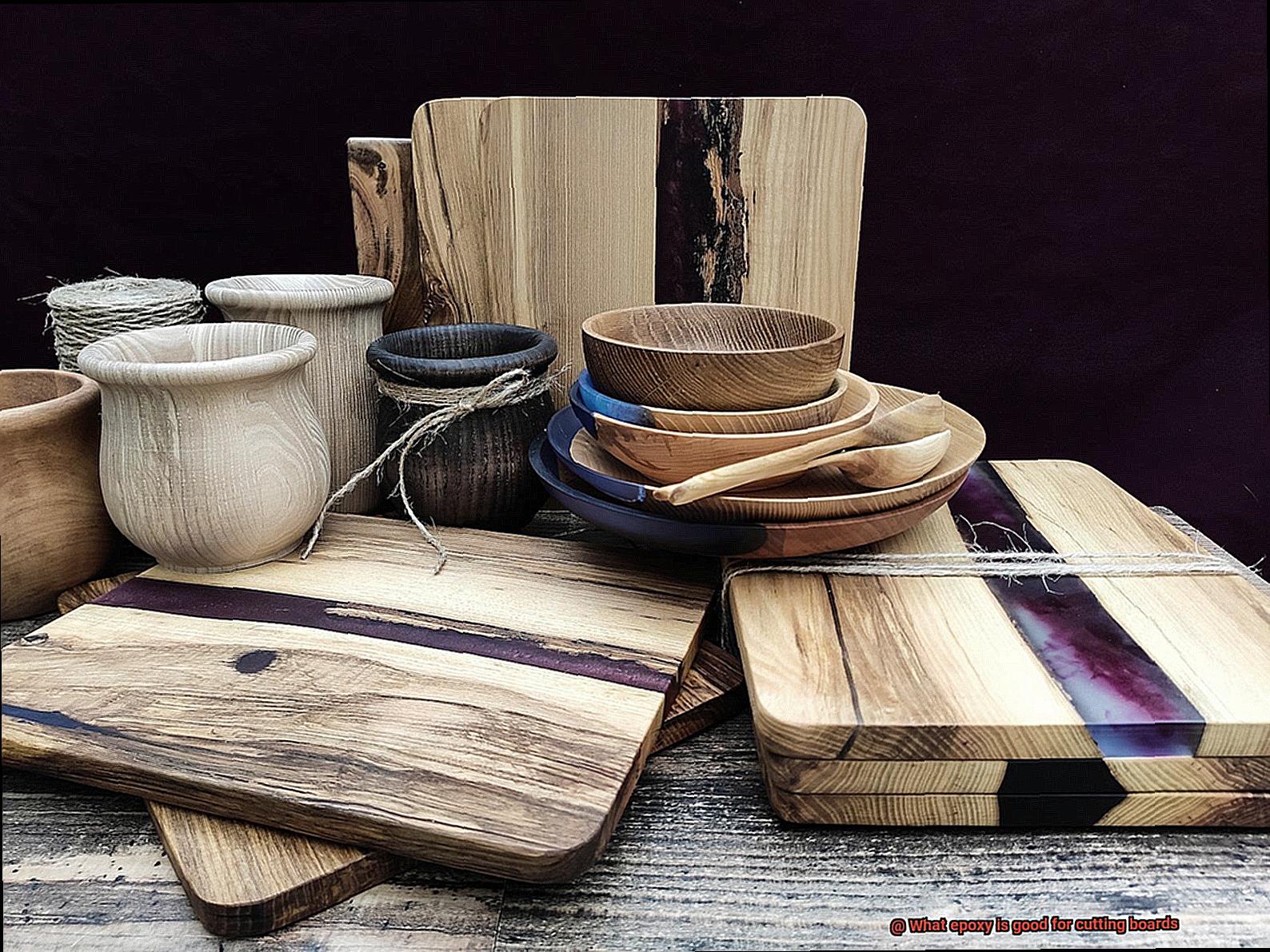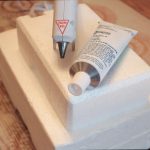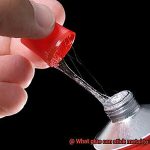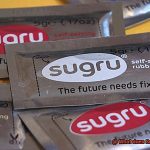Tired of constantly replacing your cutting board? Want to keep your kitchen tools in top shape for longer? Look no further than epoxy. This versatile and durable material is the perfect solution for protecting wooden surfaces from daily wear and tear.
But which epoxy should you use for your cutting board? In this blog post, we’ll explore the different types of epoxy that are best suited for cutting boards. From preventing bacteria growth to extending the life of your cutting board, we’ll cover all the benefits of using epoxy as a protective coating.
Choosing the right epoxy for your cutting board is crucial, so we’ll also dive into important factors like safety, durability, and ease of application. Whether you’re a professional chef or just love cooking at home, investing in the right protective coating can make a world of difference for your kitchen tools.
So, let’s get started on finding the perfect epoxy solution for your cutting board protection needs.
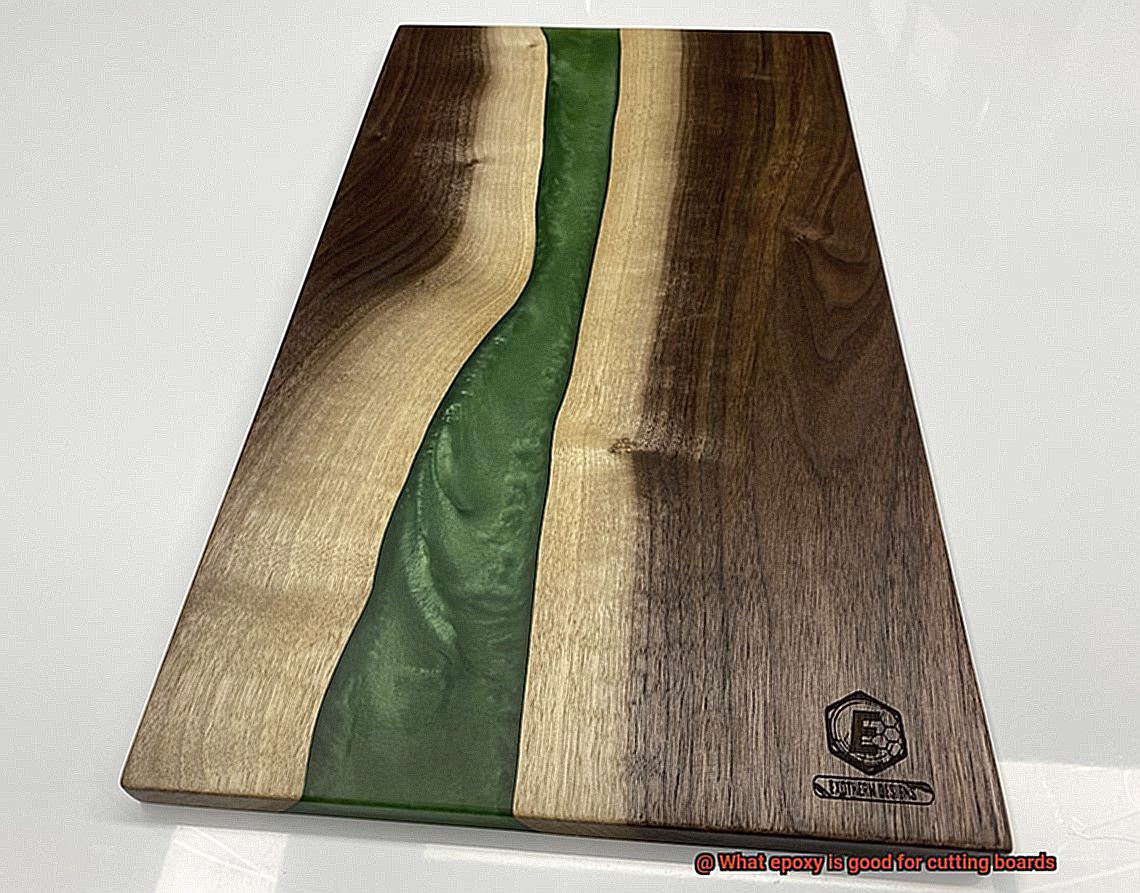
What is Epoxy?
Contents
Epoxy is a remarkable adhesive that has been widely used in various industries for many years. This versatile material is composed of two components, resin, and hardener, that form a strong chemical bond when mixed together. Its strength and quick-curing properties make it an ideal choice for cutting board construction.
When selecting epoxy for cutting board construction, it is essential to consider several factors. Firstly, the epoxy must be food-safe and non-toxic to ensure that it does not contaminate the food. Secondly, it should have excellent moisture resistance properties since cutting boards are regularly exposed to water and other liquids. Lastly, it should be heat-resistant up to at least 120 degrees Fahrenheit to withstand the heat generated during cutting and washing.
One popular option for cutting board construction is a two-part epoxy specifically designed for use with wood. This type of epoxy has a higher viscosity that allows it to penetrate and bond better with wood fibers. It also dries clear with a glossy finish, enhancing the natural beauty of the wood.
Epoxy bonds are incredibly strong and can withstand a great deal of stress and pressure. This makes it an ideal choice for applications where strength and durability are essential, such as in the construction of cutting boards. With proper research and consideration of personal preferences and needs, you can choose the best epoxy that will provide long-lasting durability and protection for your cutting board.
Benefits of Using Epoxy on Cutting Boards
Not only does it protect your kitchen staple from damage and bacteria, but it can also enhance its appearance and make cleaning a breeze.
Firstly, applying epoxy to your cutting board will create a seal that prevents moisture from penetrating the wood. This protective layer ensures your board lasts longer and stays hygienic. Plus, the smooth and non-porous surface created by epoxy makes wiping it down with a damp cloth or sponge a breeze.
But that’s not all. The barrier created by epoxy also prevents stains and discoloration caused by food and liquids. And because epoxy is a durable material, it will protect your cutting board from scratches and other damage over time.
Now, let’s talk about aesthetics. Epoxy can be colored or tinted to match your personal style, adding an extra touch of flair to your kitchen. Additionally, using epoxy on cutting boards can bring out the natural beauty of the wood grain, giving it a glossy finish that is sure to impress your guests.
In summary, using epoxy on cutting boards is a must-try for any home cook. Its benefits range from prolonging the life of your cutting board to making it easier to clean and maintain while also enhancing its appearance.
Types of Epoxy for Cutting Boards
When it comes to protecting your cutting board, epoxy is a fantastic option. However, with so many types of epoxy available, selecting the right one for your cutting board can be a daunting task. But don’t worry, we have you covered. Let’s dive into the different types of epoxy that are best suited for cutting boards.
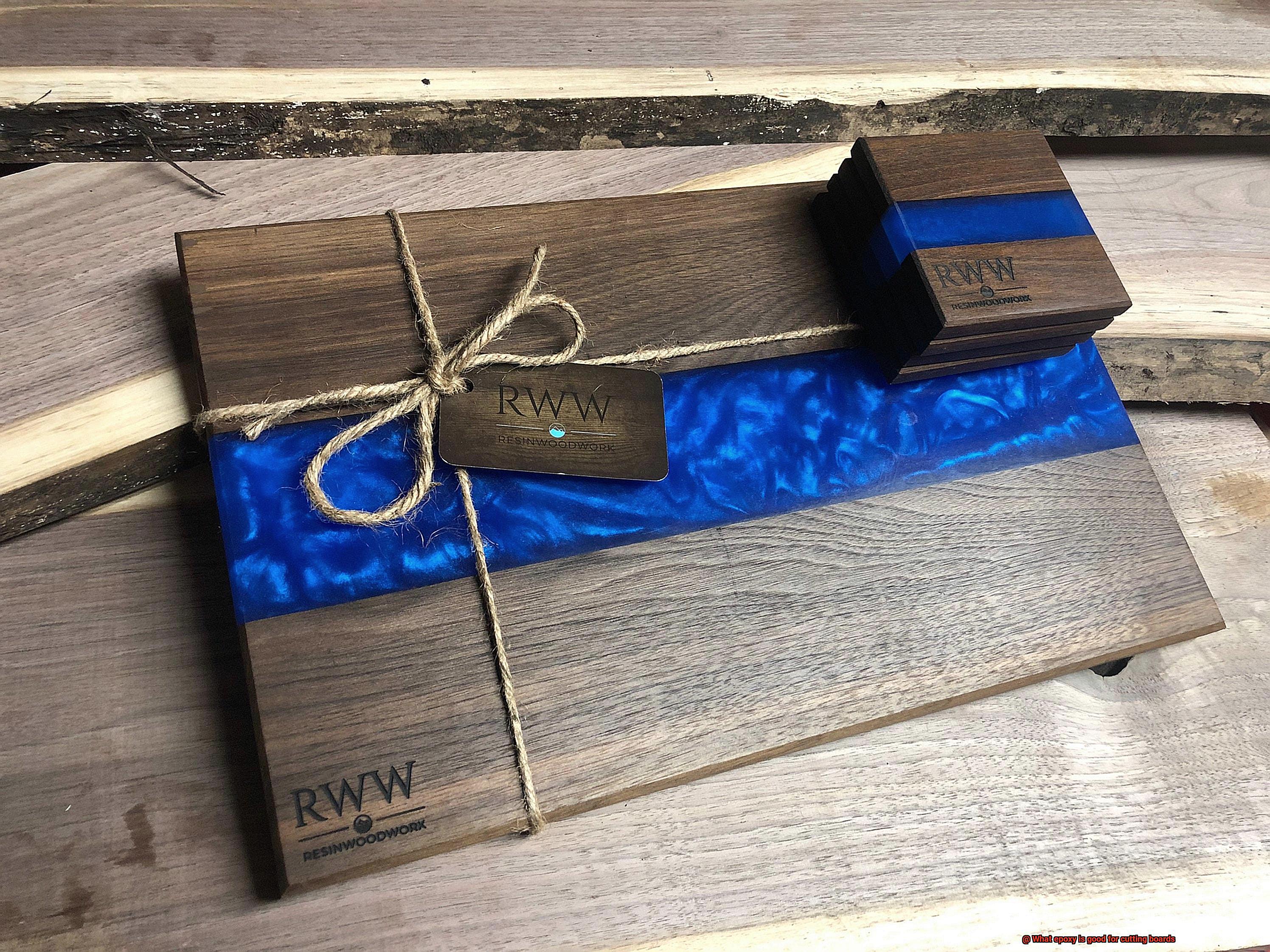
Food-Grade Epoxy
If you’re looking for an epoxy that is safe for food use, then food-grade epoxy is the way to go. It is specifically designed to be non-toxic and does not contain any harmful chemicals that could leach into your food. This type of epoxy is also resistant to moisture and heat, making it an ideal choice for frequent use in the kitchen.
UV-Resistant Epoxy
If your cutting board will be exposed to sunlight or other types of UV radiation, then UV-resistant epoxy is a must-have. It contains special additives that protect against UV damage that can cause discoloration and degradation over time. With this type of epoxy, your cutting board will maintain its natural color and beauty for years to come.
High-Temperature Epoxy
For those who plan on using their cutting board for hot foods or as a trivet, high-temperature epoxy is the perfect solution. It can withstand temperatures up to 500 degrees Fahrenheit without cracking or chipping, making it ideal for use in the kitchen.
Clear Epoxy
Clear epoxy is a popular choice among cutting board enthusiasts because it allows the natural beauty of the wood to shine through. It provides a durable, glossy finish that resists scratches and stains while enhancing the natural color and grain of the wood.
Marine-Grade Epoxy
If you’re looking for maximum durability and strength, then marine-grade epoxy is the way to go. This type of epoxy is designed to withstand harsh outdoor conditions and can form a strong bond with the surface of your cutting board. It can also be tinted or colored to match the color of your cutting board, making it a great choice for those who want a seamless and professional look.
Plant-Based Epoxy
For those who are environmentally conscious, there are plant-based epoxies available that are made from renewable resources like soybeans or linseed oil. These types of epoxies are biodegradable and non-toxic, making them a great choice for those who want to protect their cutting board without harming the environment.
Considerations When Choosing an Epoxy for Cutting Boards
When it comes to selecting the perfect epoxy, there are several factors to keep in mind. Here are some important considerations to take into account:
- Food Safety: The safety of your food should always be a top priority. When choosing an epoxy, look for products that are labeled as food-grade to ensure that it won’t contaminate your food.
- Durability: Cutting boards are subjected to daily wear and tear, so you want to select an epoxy that is strong enough to withstand frequent use. Marine-grade epoxies are often a great choice because they are designed to hold up against water and other harsh elements.
- Finish: The finish of your epoxy is another crucial factor in your decision-making process. Some epoxies have a glossy finish, while others have a matte finish. Choose an epoxy that will give you the desired effect for your cutting board.
- Ease of Application: If you’re new to using epoxy, you may prefer a simpler application process. Look for products that are ready-to-use out of the container or have an easy mixing process.
- Cost: While cost may be a consideration, quality should never be sacrificed for price. Investing in a high-quality epoxy will ensure that your cutting board lasts for years to come.
Food-Safe and Non-Toxic Epoxies
Then you must know how important it is to ensure that your cutting board is safe and hygienic for food preparation. This is where food-safe and non-toxic epoxies come into play.
Food-safe epoxies are specifically designed to keep your cutting board free from any toxicity or contamination. These epoxies comply with the FDA regulations and are formulated to be free from any harmful chemicals that could leach into food items. Choosing an epoxy that is certified by the FDA or other regulatory agencies is a must when it comes to ensuring the safety of your food.
In addition to food safety, it is equally essential to consider the toxicity level of your epoxy. Non-toxic epoxies are ideal for indoor use, especially in areas with poor ventilation. They do not emit dangerous fumes during the curing process and are free from harmful chemicals. This makes them an excellent choice for cutting boards that come into contact with food products.
When selecting an epoxy for your cutting board, always read the label carefully and choose a product that complies with relevant regulations and certifications. Here are some key points to keep in mind:
- Choose an epoxy that is explicitly marketed as food-safe.
- Look for certification from the FDA or other regulatory agencies.
- Select a non-toxic epoxy for indoor use.
- Ensure that your epoxy does not emit dangerous fumes during curing.
High Viscosity Epoxies
Not only does it make your prepping work easier, but it also keeps your kitchen organized and hygienic. But how do you ensure that your cutting board remains safe for food preparation? The answer lies in using high viscosity epoxies.
High viscosity epoxies are thicker and slower curing than lower viscosity epoxies, which makes them the perfect option for filling gaps and cracks in your cutting board. However, when choosing an epoxy for your cutting board, safety should be your top priority. You need a food-safe epoxy that meets FDA regulations for direct or indirect food contact. This ensures that the epoxy won’t leach harmful chemicals into your food while it cures.
Apart from safety, you also need an epoxy that can withstand heat and moisture. Cutting boards are frequently exposed to both elements, so it’s vital to choose an epoxy that’s moisture-resistant and can resist damage from heat. Some high viscosity epoxies are specifically designed for use in high-moisture or high-heat environments, making them an ideal fit for use on cutting boards.
To get the best results, you should follow the manufacturer’s instructions carefully when applying the epoxy to your cutting board. This may involve preparing the surface of the wood by sanding and cleaning it thoroughly, as well as mixing the epoxy components in the correct ratio and applying them evenly to the surface of the board. It’s also important to allow the epoxy to cure fully before using your cutting board again.
Heat and Moisture Resistance Properties
The key to ensuring a long-lasting, durable cutting board lies in selecting an epoxy with excellent heat and moisture resistance properties.
Cutting boards are exposed to moisture and heat regularly, causing the epoxy to break down over time. That’s why it’s crucial to choose an epoxy that can withstand the harsh conditions that cutting boards face. Among the popular choices are marine-grade epoxies, which can resist moisture, heat, and UV radiation. These epoxies are ideal for cutting boards that are frequently used.
Another option is food-grade epoxy, specially formulated for use in food preparation areas. These epoxies are non-toxic and safe for use with food, making them a perfect choice for cutting boards used in kitchens.
However, not all epoxies are created equal. General-purpose epoxies may not have the necessary properties to protect your cutting board from wear and tear. It’s essential to choose an epoxy specifically designed for use with cutting boards.
Selecting the right epoxy is only half the battle. Proper application and curing are also crucial for the longevity of your cutting board. Follow the manufacturer’s instructions closely and allow ample time for curing before using the cutting board. This will ensure that the epoxy has fully cured and will provide long-lasting protection against moisture and heat.
DlMZro2xbRI” >
Conclusion
To sum it up, epoxy is the ultimate solution for safeguarding your cutting board against daily wear and tear. Picking the right epoxy requires considering factors such as safety, durability, ease of application, and finish. To ensure food remains safe and hygienic during preparation, always opt for non-toxic and food-safe epoxies.
For filling gaps and cracks in your cutting board, high viscosity epoxies are ideal. Marine-grade epoxies offer excellent moisture resistance properties that can withstand harsh conditions. If your cutting board is exposed to sunlight or UV radiation, UV-resistant epoxy is the perfect choice. Clear epoxy enhances the natural beauty of wood grain while providing a durable glossy finish.
Epoxy creates a seal that keeps moisture from penetrating the wood, making cleaning easier and preventing stains and discoloration caused by food and liquids. Moreover, it protects your cutting board from scratches and other damage over time.
In conclusion, choosing the right epoxy for your cutting board can prolong its lifespan significantly while keeping it looking brand new.

